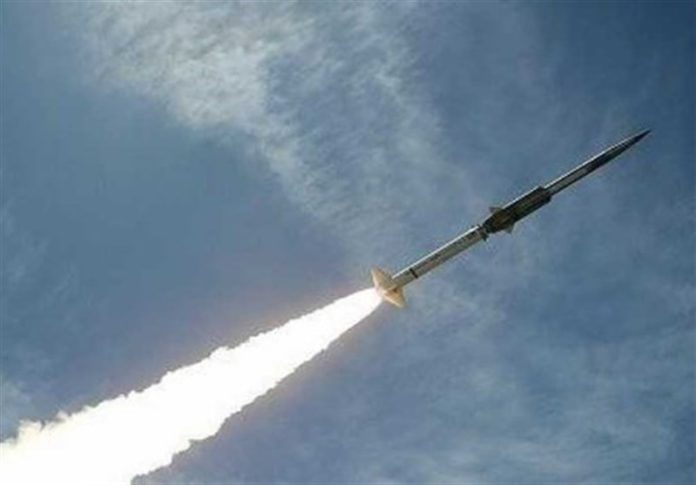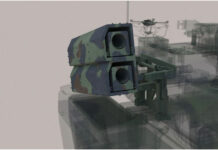
The Iranian news agency Tasnim published yesterday new details about the surface-to-air missile claimed to have downed a Royal Saudi Air Force Tornado IDS over Sa’ada and hit another F-15S over Sana’a earlier this week.
The missile shown in an image published by the agency shows a long cone-shaped guided weapon, likely one using Command to line-of-sight (CLOS) without an EO/IR seeker.
A video clip that recorded the F-15 intercept was taken by a thermal imaging camera, likely an off-the-shelf 9″ multi-sensor ball made by FLIR Systems that has an automatic tracker, could have been associated with the guidance system. If indeed such passive targeting systems were used, it explains the apparent lack of use of evasive maneuvers by the Saudi F-15 as was seen in the video.
As seen from the released image, the missile segment has aerodynamic fins and strakes, optimised for high velocity but not canards, required for sharp maneuvers. On launch, the missile is accelerated by a solid-rocket booster. The video shows that the missile either hit the aircraft tail or explode in proximity, using relatively small effect.
The missile shown in the photo does not look like any known Iranian surface-to-air missiles.
According to Yemeni news agency SABA, the Houthi said the new capability was fielded despite continuous Saudi efforts to suppress those air defense capabilities. Until now, Yemen’s air defense capabilities relied on obsolete S75 (SA-2) and short-range, low-altitude Man-portable Air Defense Systems (MANPADS). Nevertheless, Yemeni forces, likely supported by Iranian air defense systems, repeatedly caused losses to Saudi-led coalition air forces, downing at least eight fighter jets (three F-16s, an F-15S, Mirage 2000, Typhoon, Tornado, and AT-802U), 13 helicopters of various types, and two MQ-9 Reaper drones operated by the USA.



















